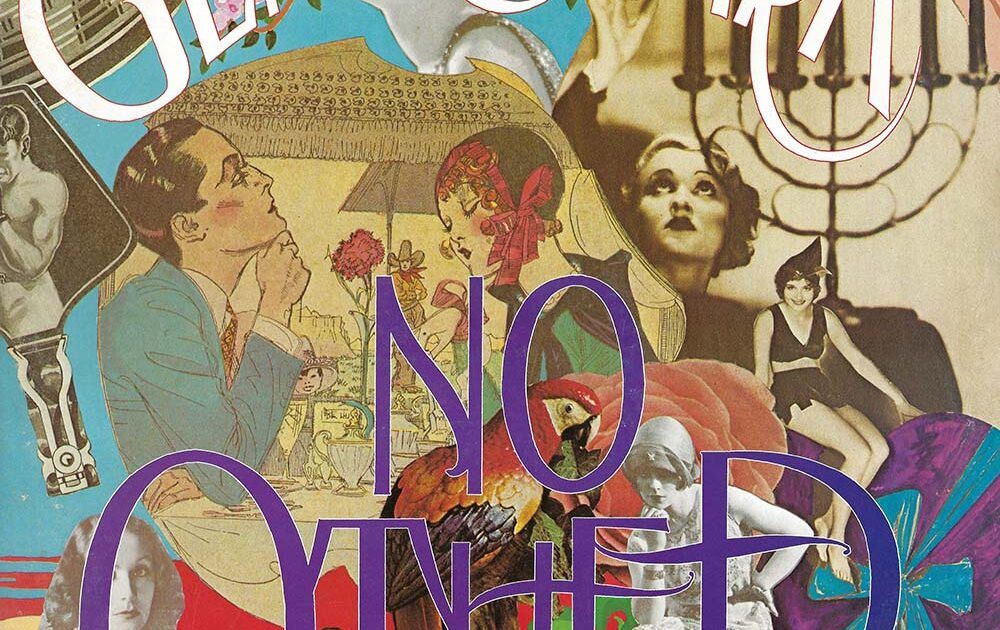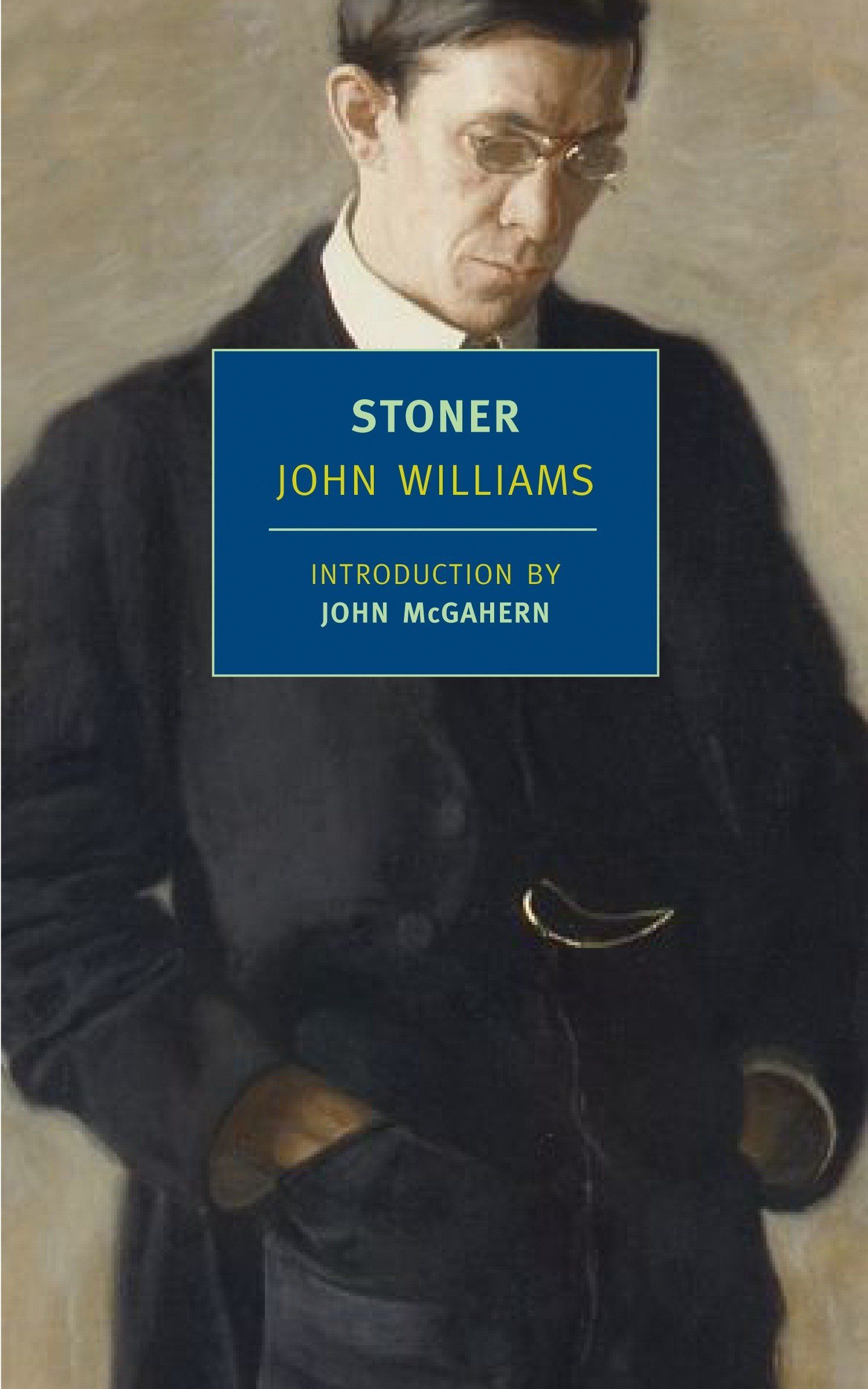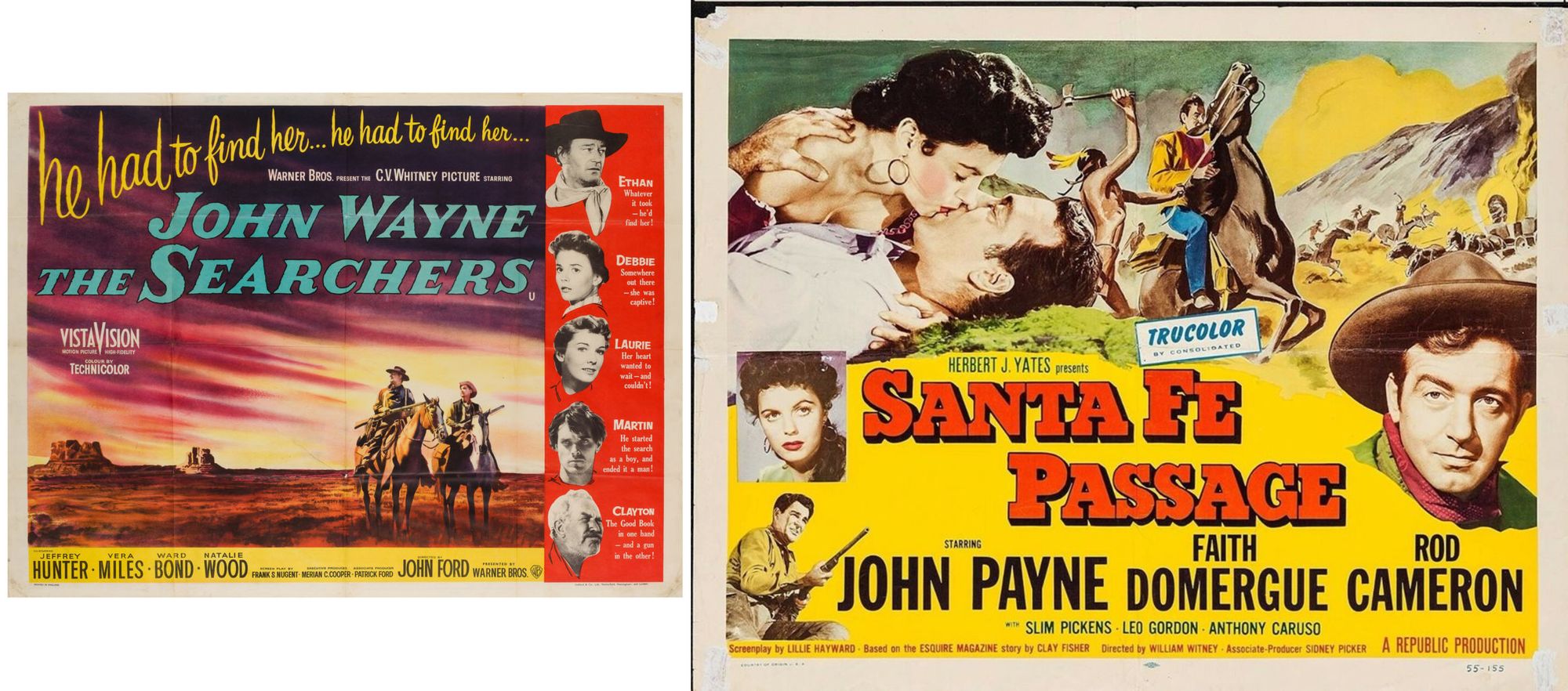No Other

I’m not thrilled about it, but I figure Youtube clips are the most accessible vehicle for the tracks referenced here. Readers who enjoy the songs themselves are encouraged to seek them out in a more sonically appropriate format—whether higher resolution digital, vinyl, or what have you.
Perhaps because I am now approaching 40, I have found myself thinking more and more about legacies, about the marks people leave behind. Why some are widely remembered, and others slip between the cracks.
There is something unbearably poignant—almost Borgesian—to me about the disappearance of works of true greatness. Did their makers know they had made a masterpiece? We like to idealize geniuses as working solely according to their own lights, needless of approbation from lesser mortals. But I think of James Joyce languishing unknown in Trieste, unable to complete Portrait of the Artist as a Young Man, while Dubliners sits in publishing limbo, and I imagine an alternate universe where all we have are tantalizing fragments from what would have been the greatest writer of fiction in the English language, just awaiting rediscovery.
We live in a time in which we are literally glutted with “content.” But we are also gifted with archivists of surpassing taste and judgment. The gold standard for this in letters right now has to be the NYRB Classics series, which has brought renewed attention to dozens and dozens of worthy books—the most popular evidently being John Williams’ Stoner (which probably says something about the readers this series attracts). But how many readers would have otherwise picked up Maria Dermoût’s The Ten Thousand Things or Simone Schwarz-Bart’s The Bridge of Beyond, to name two personal favorites. Really a surfeit of magnificence, most of it long forgotten. By why forgotten?

We see it with cinema too. Before the AV Club website became…what it’s become, Nathan Rabin had a great running feature called My World of Flops (which he appears to be continuing here), in which he exhumed all manner of, well, cinematic flops. Most of these were flops for good reason: the bad ones for very good reason, and even the secretly great ones owing to the disjunction between their niche content and popular tastes.
But once in a while, he would hit a head-scratcher. In a just world, for example, everyone would have seen Walk Hard by now. It’s funny as hell, one of the great hangout movies, and has a kickass soundtrack. But like another musically-themed cult film, This Is Spinal Tap, perhaps it was just made to be watched in a friend’s basement? Cult artifacts do exist for a reason, however arbitrary.
And then there are the sub-sub-sub-radar titles—the stuff that will never even appear on the Criterion Channel. I’ve seen more movies than the average bear, but reading this excellent Quentin Tarantino interview, I’m staggered by the sheer number of worthwhile films I’ll probably die without seeing. And how much of this comes down to fortune? Let’s say none of these long-lost Westerns is the equal of The Searchers or Once Upon a Time in the West. They must at least be the equal of whatever’s playing at the Cineplex as I write this.

But I think there’s no domain more perplexing than music when it comes to these things. The first Big Star album sounds like it should have blasted from every car window in America, but Nick Drake clearly doesn’t (which makes that VW commercial all the weirder). Some bands are limited by cultural specificity: the intense Englishness of The Kinks and the Smiths probably limited their popularity in the States (while still incurring passionate attachment among Anglophiles). And this is without getting into non-English language releases, which are even more restricted, though once in a while something will break through in a big way—Getz/Gilberto in the 60s; Buena Vista Social Club in the 90s.
But elsewhere it looks more and more like chance. I have had numerous knockdown arguments over, e.g., the relative greatness of artists picked up by Numero Group’s Eccentric Soul series. Is Helene Smith really up there with Aretha Franklin? Or are her songs just a revelation now, while Aretha’s are part of the sonic landscape? Would I like Lee Moses as much as I do, had his songs been featured on every shitty romantic comedy soundtrack since the beginning of time?
(The flip side to this of course is how many artists are buried by the contempt that comes with familiarity. A fun parlor game to play is: which bands would rise the highest in your estimation if you wiped all previous memories of them out with the Eternal Sunshine of the Spotless Mind machine? Me, I’d go with a 3-way tie between The Who, Led Zeppelin, and U2).
Only the vulgar associate greatness with popularity. But when a thing is truly great, our sense of justice impels us to think that it will find an audience commensurate with its excellence. And when this doesn’t happen, we will want to know why.
All of which brings me to Gene Clark.
Clark is exemplary for being a popular cult artist—both in the sense that he has a sturdy cult following among music fans and other musicians, but also in the sense that he was actually at one time quite popular.
If you wanted to map the genealogy of postwar American music, Gene’s DNA is everywhere. He’s a founding member of The Byrds, one of the dozen or so most influential bands in the history of rock, as well as strong contender for greatest ever American band.[1] That’s him playing tambourine in all those clips of Mr. Tambourine Man, the cover that mainstreamed Dylan and basically invented folk-rock.
He was indisputably their greatest songwriter, penning “I’ll Feel A Whole Lot Better”—the greatest ever iteration of that pop-song staple, the kiss-off song. Actually, he was pretty much the master of the kiss-off song, combining coolness with melancholy without veering into misogyny like so many of his peers (e.g., every Zeppelin tune not about Lord of the Rings).
EXCURSUS
That particular classic got something of a second lease on life with Tom Petty’s cover—the first version I and likely many others heard. Appearing on the smash album Full Moon Fever, it generated windfall royalties for Clark, which Monkey’s Paw-style allowed him to resume funding the drinking-and-drugging lifestyle that killed him shortly thereafter. Clark incidentally has provided a wealth of cover material for other artists, including inter alia indie-rock darlings Yo La Tengo, gothic weirdos This Mortal Coil, and the surprisingly mainstream-but still-excellent Alison Krauss/Robert Plant collaboration. He even supplied his name (though not a song itself) to Teenage Fanclub, whose gorgeous “Gene Clark” offers the prospect of one cult artist singing about another cult artist (interestingly, the song itself actually sounds like Neil Young, but somehow captures the almost prayerful melancholy in Clark’s work).
Clark coverage culminated when, almost a decade ago, a veritable indie-rock supergroup consisting of members of Grizzly Bear, Fleet Foxes, Beach House, the Walkmen, and Wye Oak came together for a limited series of concerts in which they covered No Other (about which, more anon) live in its entirety. There’s an undeniable thrill in seeing the torch get picked up by yet another generation, but these performances, strong as they are, lacked something of the majesty—not to say the lavish production—of the original.
END EXCURSUS
But for a time he was everywhere with godlike pop songs, the best of which could go toe-to-toe with anything on, say, Rubber Soul: the spiraling melody of “She Don’t Care About Time; the chiming regret of “The World Turns All Around Her,” which peaks with its bridge (an old Beatles trick); the lyrical torch song “Set You Free This Time.” And he married them to surprisingly sophisticated and densely allusive wordplay — like Bob Dylan without the overpowering ego or Townes Van Zandt without the deep strain of cynicism.
Before fleeing the Byrds, he fired off one of the first great salvos of psychedelic rock with “Eight Miles High”—a reference not to drugs but to the crippling fear of flying that would contribute to his exit from the heavy-touring group. All of this, by the way, is by early 1966, which might sound late until you check the charts, and recall that at this point there were the Beatles, the Beach Boys, and Dylan, and that’s about it (the Rolling Stones were primarily a cover band up to this point, having only recently taken the early steps into the extremely fruitful Jagger/Richards songwriting partnership).
The band Clark left behind still retained David Crosby, of future Crosby, Stills, and Nash (and Twitter!) fame; Roger McGuinn, who would remain the Byrds’ default leader; and Chris Hillman, who would go on to form country-rock greats the Flying Burrito Brothers along with Gram Parsons. Each of them would continue to achieve varying degrees of critical and commercial success, as well as earning cred for their genre innovations.
Meanwhile Clark’s career looks like a shadow image of theirs, both with his unheralded but brilliant solo records, and with his short-lived partnership, Dillard & Clark. The former are pure, if particularly deep and introspective folk, but the latter are…some kind of psychedelic bluegrass/Americana? They defy easy categorization; the songs are formally bluegrass and country-rock, but because Clark’s pop instincts are so strong, the traditional instrumentation gets yanked in whatever direction the songs need to go.
Though not a named member, Bernie Leadon was a major contributor to these records, before going on to become The Eagles’ original guitarist. To the extent that the early Eagles occasionally managed to record a song that didn’t smack of inauthenticity and general smarm, that’s mainly creditable to Leadon. (I am aware that it is obvious and cliched to dislike The Eagles—especially since that scene in The Big Lebowski – but really The Eagles are what would happen if Gene Clark sold his soul to Satan and also there were four or five of him).
And then…things get strange. Clark’s records stop selling, and basically never sell again until he dies. The thing is, this isn’t Scott Walker we’re talking about. He was working in well-established musical territory. Country-rock sold about a zillion records in the 70s, between The Eagles, Linda Ronstadt, Poco, Pure Prairie League, etc. Despite being one of its progenitors, he didn’t get to cash in. Folk and folk/adjacent records from James Taylor, Jackson Browne, and Carly Simon sold by the truckload and remain staples of Boomer households the world over. But not Clark’s. Before vinyl became hip again, it was pretty much your only chance to hear him.
In 1971, he made a record which is sometimes listed as self-titled and sometimes (aptly) called White Light. In the era when singer-songwriters reigned supreme, most of them selling a combination of self-pity and sanctimony (surely, you know who I’m talking about), it was unquestionably one of the greatest singer-songwriter albums ever made. “For a Spanish Guitar” was strong enough that no less than Bob Dylan said he wished he’s written it, and the other eight tracks were nearly as good. No one bought it.
Two years later he put together another set of tremendous songs combining folk, country-rock, and psychedelia—including what for my money might be his greatest song, “In a Misty Morning”—and his own label wouldn’t even put it out. It was finally released as Roadmaster, though not in North America. My vinyl copy appears to be from the Netherlands, one of the few countries that appreciated him.
Why did he have so little luck? Truth be told, for all his melodic gifts, he can be a painful listen. It wouldn’t be quite right to say that melancholy introspection itself is a hurdle—tortured self-examination didn’t keep Lennon’s Beatles songs from taking over the planet, and aching sadness didn’t stop the Everly Brothers (or Sinatra before them) from hitting #1. But something about Clark hurts to stand close to for too long. Joni Mitchell described herself at the time of writing Blue as having no skin. Clark feels like that too. As with Nick Drake, the listener occasionally has the sense of intruding on an intensely private affair.
Nobody could say this about his next release, which was also his masterpiece. No Other pretty much sounds like what would you’d get if you gave someone 100 grand (over half a million in today’s dollars), and they spent it on equal parts studio wizardry and cocaine—which is pretty much exactly what happened.
Not unlike The Flying Burrito Brothers’ Gilded Palace of Sin, the production is almost cartoonishly massive—slabs of deep, rubbery bass undergirding celestial multitracked harmonies stacked out to Jupiter, with diamond-etched pedal-steel lines soaring over the whole affair (though nothing on No Other was as flat-out ridiculous as naming one of the saddest love songs ever written “Hot Burrito #1”). He brought in shit-hot LA session musicians, The Section, who all played on massive 70s-era hit records and recruited ringers like the Allman Brothers’ Butch Trucks to drum. Sly Stone (a fellow casualty) supposedly dropped by the sessions (to advise?).
Meanwhile, like Rumours or Station to Station, its lavish chrome production and glammed-out flourishes seal in oceans of feeling. And amidst the (awesome) excess lies a kind of sustained and heightened clarity that comes through in every lyric. I’ve come to think of it as part of a subgenre of albums grappling with the damage wrought by the excesses of the age (Dennis Wilson’s Pacific Ocean Blue is another). His own remarks on writing the album attest to the introspection at its core:
“I stared at the ocean for hours at a time. I would have a pen and paper there, and a guitar or piano, and pretty soon a thought would come and I’d write it down or put it on tape. In most instances, after a day of meditation looking at something which is a very natural force, I’d come up with something.”
Indeed. But of course, it didn’t matter. Geffen supposedly threw the acetate in the trash without evening listening to it. It mostly disappeared. Of course, in the physics of fandom, the same qualities that may have repelled a mass audience produce an intensely strong attraction among those come around to the music.
Thirty years since his death, and a half-century since he made his greatest music, it’s still not easy to pinpoint exactly why Clark never broke through. Some of what happened is dumb luck, but as above maybe there’s just something about him that resisted the kind of audience that grants true frame. Not just the intensely personal quality of his music and lyrics, but he himself. Sure, he looked like a quarterback and made #1 records. But he always seemed like someone trying to leave his own party.
Watch those old clips of The Byrds: physically he’s the standout but you can almost see him trying to retreat behind the less imposing Crosby and McGuinn. He already seems to be departing: the band, the spotlight, the world. Even when he went big, there was some part of him that shielded the music from mass approval.
He hardly refrained from partaking in the indulgent lifestyle that has made that generation so repellent to the rest of us. But there’s no Clarkian version of “Peaceful, Easy Feeling.” Instead he made music that was deeply, even painfully personal, while never losing the artfulness and grace that art requires. And with No Other—his shot at the title—he came up with something gleaming and coked-out and wondrous, and it’s basically the greatest gospel-country-funk-cosmic Americana record ever made. In other words, an eternal cult album that should stay that way long after every American has actually heard it.
[1] I realize this sounds hyperbolic, but who else you got? The Velvets were undeniably influential but also very niche. Ditto for the Grateful Dead. And it frankly seems weird to call the Beach Boys a band, even though they technically were. I am aware that this ends up being a restrictive category given that the British effectively dominated three decades of popular music.
